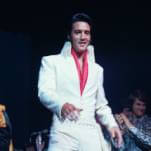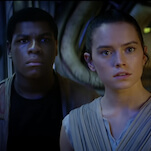Kids seeing their favorite books turned into movies can be a pop-culture rite of passage, whether the results are satisfying or heartbreakingly disappointing. To that point, the movie version of Katherine Paterson’s classic children’s novel The Great Gilly Hopkins may serve as an early lesson for young readers and movie-watchers on the way that a film can be utterly faithful to its source and still not feel quite right.
This particular lesson has been a long time coming. Paterson’s book came out in 1978, and it’s surprising that it’s taken nearly 40 years for a feature version to materialize—not because its story of headstrong 11-year-old Galadriel “Gilly” Hopkins entering a new foster home is irresistibly cinematic, but because usually its status as a beloved piece of children’s literature is more than enough. But Gilly Hopkins turns out to be deceptively difficult to crack—even, or perhaps especially, when stewarded by Paterson’s son, David, who serves as screenwriter and producer.
The filmmakers obviously respect the material, having made very few major changes. The story still follows foster-home-hopping Gilly (Sophie Nélisse) as she reluctantly enters the care of Trotter (Kathy Bates), a sweet and God-fearing woman who also fosters a young boy called W.E. (Zachary Hernandez). Gilly longs to rejoin her birth mother Courtney (Julia Stiles) and in the meantime affects a surly self-sufficiency, refusing help and issuing cutting remarks whenever possible. Almost every character and scene from the book appears in the film, with a lot of dialogue reproduced verbatim, give or take some mild swears (mildly sanitized from the likes of “hell” or “damn” to favor “freakin’”) and the briefest of references to post-1978 technology (the movie appears to be set in the present, though it could pass for 10 or 15 years ago pretty easily).
Yet the way that lines are read can count as much as the lines themselves, and what sounds snappy in Paterson’s tween-appropriate prose often sounds stilted (and distinctly Canadian) emerging from the mouth of Sophie Nélisse. She overenunciates her kiss-offs and can’t make her most awkward scenes, like when she talks to a photo of her wayward mother, ring with naturalism or even basic truth. It’s not all Nélisse’s fault; she’s burdened with an adaptation change that reaches beyond the pages of the screenplay. The book’s Gilly is 11, and while the movie seems to agree (at least based on her school assignments and classmates), Nélisse was about 15 at the time of filming. This acceleration of Gilly’s maturity fits a movie that seems afraid of the risks that come with not telegraphing the lonely, wounded girl underneath Gilly’s hard, standoffish exterior.
Having a teenager play Gilly makes the coming-of-age journey seem over before it really begins. It also makes her moxie a lot cutesier than it should be. As such, little that happens in the movie carries much weight, especially when kid-movie vet Stephen Herek stages little bits of physical action—a schoolyard fight; a minor fender-bender—with surprising flimsiness. The whole movie falls between stylization, which it mostly lacks, and realism, which it can’t quite claim with its non-teenage teenager spouting non-swearing swears. Gilly Hopkins deserves some credit for maintaining its source’s smallness, but its toughness is in shorter supply, and further muted by an overly reassuring coda. Most of the time, it protects Paterson’s legacy by ensuring that even kids who see the movie first may be in for a revelation if they pick up the book.



![HBO teases new Euphoria, Larry David, and much more in 2026 sizzle reel [Updated]](https://img.pastemagazine.com/wp-content/avuploads/2025/12/12100344/MixCollage-12-Dec-2025-09-56-AM-9137.jpg)





































